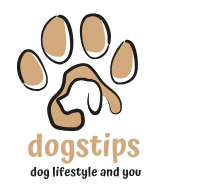Did you know 1 in 4 dogs repeatedly gnaws at their feet? This common habit often signals more than just curiosity. While occasional paw grooming is natural, persistent nibbling could point to hidden discomfort—from seasonal allergies to unseen injuries.
Pet owners often notice their companions licking or chewing paws after walks or during stress. These actions might seem harmless, but frequent episodes can lead to infections or inflamed skin. Environmental irritants like pollen, harsh cleaning products, or even anxiety may trigger the behavior.
Understanding the root cause is crucial. Allergies rank as the top physical culprit, while boredom or compulsive habits often drive behavioral patterns. Monitoring your pet’s routines helps identify triggers—like sudden changes in diet or new household chemicals.
This guide explores both medical and emotional factors behind paw-focused behavior. You’ll learn when to consult a vet, how to spot early warning signs, and strategies to protect your furry friend’s well-being. Let’s decode this puzzling habit together.
Understanding Canine Paw Behavior
Canine paw-focused behavior often puzzles even experienced animal lovers. While occasional grooming is normal, repetitive actions like licking or chewing feet often signal emotional needs. These patterns frequently emerge during quiet moments or after environmental changes.
Behavioral Triggers and Self-Soothing
Many pets use paw chewing like humans bite nails – to manage stress. Veterinary behaviorist Dr. Ellen Lindell notes: “This repetitive motion releases calming endorphins.” Common triggers include:
• Prolonged alone time
• Loud noises like thunderstorms
• Changes in household routines
Pets left without mental stimulation may lick paws excessively. A tired companion with chew toys rarely focuses on feet.
What Paw Chewing Communicates
Persistent foot grooming serves as a furry SOS signal. It might say: “I'm bored” or “This itch won't quit.” Watch for timing – pets that lick paws after walks could react to grass chemicals.
Track frequency in a journal. Sudden increases often coincide with life changes like new family members. Always rule out medical causes before assuming behavioral roots.
Recognizing these cues helps owners address needs early. Simple fixes like puzzle feeders or calming wraps often reduce paw-focused habits within weeks.
Why Do Dogs Bite Their Paws
Frequent paw chewing in dogs isn’t just a habit—it’s a clue to their health. Owners who track when and how often their companion focuses on feet often uncover hidden triggers. Redness between toes, swollen pads, or seasonal flare-ups might point to specific issues needing attention.
Decoding Physical and Environmental Clues
Allergies often drive persistent licking. Food sensitivities might cause year-round irritation, while pollen or mold spikes lead to spring/fall flare-ups. Watch for excessive scratching elsewhere—ears or belly reactions often accompany paw issues.
Skin changes offer critical insights. Crusty patches, hot spots, or unusual odors signal infections requiring vet care. Document chewing frequency: post-walk nibbles could mean grass chemicals, while nighttime focus might indicate anxiety.
Create a simple log noting dates, durations, and visible symptoms. This helps veterinarians pinpoint causes faster. Early intervention prevents minor irritations from becoming severe infections. A checkup can rule out arthritis or foreign objects lodged between pads.
Proactive monitoring paired with professional guidance protects your companion’s comfort. Simple adjustments like hypoallergenic wipes or diet changes often bring relief when tailored to their needs.
Common Medical and Physical Causes
Persistent paw-focused behavior often points to physical discomfort requiring attention. Hidden health issues frequently manifest through repeated licking or gnawing, making timely identification critical for your companion’s comfort.
Allergies, Infections, and Inflammation
Environmental or food-related allergies create relentless itching that drives constant chewing. Pollen, dust mites, or certain proteins trigger immune responses, leading to inflamed skin between toes. Bacterial or yeast infections worsen irritation, with conditions like pododermatitis causing visible redness and odor.
Watch for thickened skin or discharge – these signal advancing issues. Left untreated, infections can spread, affecting overall health. Early veterinary exams paired with allergy testing often identify triggers. Treatment might include antihistamines or specialized shampoos.
Injuries and Arthritis Impact
Subtle injuries like cracked pads or embedded debris cause localized pain. Pets may focus on sore areas, creating cycles of chewing that delay healing. Arthritis sufferers often lick joints for temporary relief, though this worsens inflammation over time.
Notice limping or reluctance to walk? Schedule a checkup. X-rays or joint fluid analysis help diagnose musculoskeletal problems. Your veterinarian might recommend anti-inflammatory medications or physical therapy to manage discomfort.
Tracking symptom patterns helps professionals differentiate causes. For example, seasonal flare-ups suggest environmental allergies, while year-round issues may indicate food sensitivities. Learn more about allergy symptoms and management strategies through trusted resources.
Grooming Essentials and Nail Care Concerns
Regular grooming routines do more than keep coats shiny—they prevent hidden discomfort that drives paw-focused habits. Overgrown nails or matted fur force pets into awkward postures, creating pressure that often leads to persistent chewing. Neglected claws curling into paw pads or dirt trapped between toes rank among the top preventable causes of irritation.
When Nails Become Trouble
Long nails alter foot alignment, making walking painful. Pets may gnaw at their feet to relieve pressure, risking cuts or infections from broken skin. Listen for clicking sounds on floors—a clear sign claws need trimming. Use guillotine-style clippers or rotary grinders every 3-4 weeks, depending on activity levels.
Poor hygiene invites bacteria. Muddy walks or sandy play areas leave debris that irritates sensitive skin between toes. Weekly paw checks help spot early redness or swelling. Wipe feet with pet-safe cleansers after outdoor adventures to remove allergens and grime.
Watch for these warning signs:
• Limping or favoring one leg
• Brown discharge around nail beds
• Crusty buildup between toes
Consistent care prevents 80% of grooming-related issues. Ask your vet for product recommendations if your companion resists handling. A calm approach paired with positive reinforcement makes maintenance sessions stress-free for both of you.
Lifestyle Influences on Paw Chewing
A dog's daily habits often mirror their environment. Compulsive foot-focused behaviors frequently stem from unmet mental needs or household stressors. Recognizing these patterns helps create solutions tailored to your companion’s unique situation.
Boredom and Environmental Factors
Understimulated pets often redirect restless energy toward their feet. Without engaging activities, repetitive chewing becomes a coping mechanism. Sterile living spaces lacking sensory variety amplify this behavior.
Interactive puzzle feeders and scent games provide mental challenges. Rotate toys weekly to maintain novelty. A 2022 veterinary study showed pets with daily enrichment reduced compulsive habits by 68% within a month.
Anxiety and Separation Stress
Stress hormones drive physical reactions like excessive licking. Pets left alone for extended periods may focus on paws for comfort. Thunderstorms or schedule changes often trigger flare-ups.
Calming aids like pheromone diffusers or weighted vests offer relief. Pair these with consistent routines to build security. Gradual alone-time training helps separation-sensitive companions adjust.
Always consult your vet to rule out medical causes like infections or injuries before addressing behavioral factors. Simple lifestyle changes—increased walks, chew-resistant toys, and designated quiet zones—often yield dramatic improvements. Track progress through a behavior journal to identify effective strategies.
Expert Veterinary Insights
Veterinary professionals stress comprehensive diagnostics when addressing persistent paw chewing. Dr. Valentina Henao emphasizes: “Every case demands detective work – symptoms alone rarely tell the full story.” Specialists often combine physical exams with advanced testing to pinpoint hidden problems, from food sensitivities to autoimmune conditions.
Diagnostic Tips from Your Veterinarian
Initial assessments typically involve checking paw pads for inflammation, foreign objects, or skin abnormalities. Vets may use cytology tests to identify bacterial overgrowth or recommend blood panels to detect systemic issues. Allergy testing – either through serum analysis or elimination diets – helps isolate environmental or food triggers.
Tracking your companion’s habits accelerates diagnosis. A two-week journal noting chewing frequency, meal times, and outdoor activities often reveals patterns. One case study showed a terrier’s midday paw focus correlated with pollen counts, guiding targeted allergy management.
Persistent redness or odor warrants deeper investigation. Skin biopsies or joint X-rays might uncover hidden infections or arthritis. These methods provide clarity when surface-level treatments fail to bring relief.
Always consult your vet if symptoms linger beyond three days. Early intervention prevents minor irritation from becoming chronic inflammation. Trusted guidance ensures tailored solutions – whether medicated shampoos or behavior plans – address the root problem effectively.
Effective Treatment and Management Strategies
Tailored solutions bring relief to persistent paw-focused behaviors. Addressing root causes requires combining medical interventions with lifestyle adjustments. A golden retriever named Max stopped chewing after his owners paired antifungal creams with interactive play sessions—proof that integrated approaches work.
Medications and Topical Remedies
Vets often prescribe antihistamines for food allergies causing inflamed dog paws. Bacterial yeast infections typically need medicated shampoos or oral antibiotics. Topical sprays with oatmeal or aloe soothe irritated skin between toes.
Treatment plans vary by diagnosis. Allergy-related cases might involve hypoallergenic diets, while infections require antimicrobial solutions. Always complete prescribed courses to prevent recurring issues.
Behavioral Modification Techniques
Redirecting chewing habits starts with identifying triggers. Replace paw focus with puzzle toys or training exercises. Positive reinforcement works best—reward your furry friend for choosing toys over their feet.
Consistency matters. A 2023 study showed pets using lick mats during stressful events reduced compulsive behaviors by 54%. Combine environmental enrichment with vet-recommended plans for lasting results.
Collaborate closely with professionals to customize strategies. What works for one companion may differ for another, making personalized care essential for success.
Home Care and Preventative Measures
Consistent paw care routines shield companions from discomfort while strengthening your bond. Simple daily habits form the first defense against infections and irritation. Start by establishing a post-walk ritual – it takes just minutes but yields lasting benefits.
Daily Defense Against Infections
Gentle cleaning removes allergens and debris that trigger chewing. Use lukewarm water or vet-approved wipes to scrub between toes after outdoor activities. Dry thoroughly to prevent moisture buildup, which invites bacterial yeast overgrowth.
Inspect pads weekly for cuts or foreign objects like burrs. Look for redness, swelling, or unusual odors – early signs of yeast infection. Trim fur between paw pads to reduce dirt accumulation. Pet-safe moisturizers prevent cracking in dry climates.
Choose products carefully. Harsh chemicals in household cleaners worsen irritation. Opt for pH-balanced shampoos and fragrance-free balms. A prevention-focused approach reduces instances where dogs chew compulsively to soothe inflamed skin.
If redness persists despite care, consult your vet. Persistent licking could signal deeper issues needing medical attention. Remember – consistent routines help dogs chew less and live more comfortably.
Final Thoughts on Nurturing a Happy, Healthy Pet
Caring for a pet’s paws requires both vigilance and compassion. Addressing persistent licking involves a three-part strategy: veterinary guidance, consistent grooming, and enriching daily routines. Allergies, infections, or anxiety often drive this behavior—each needing tailored solutions. Early intervention prevents minor irritations from escalating into chronic conditions.
At-home care plays a pivotal role. Simple practices like paw inspections and mental stimulation reduce risks. Pets left alone may develop separation anxiety, redirecting stress onto their feet. Creating a calm home environment with interactive toys and routine checks helps break this cycle.
Stay alert to changes in habits. While occasional chewing is normal, prolonged focus on paws warrants professional advice. Partnering with your vet ensures your companion receives holistic care. Together, these efforts foster healthier paws and a happier bond between you and your furry friend.
FAQ
What allergies commonly lead to excessive paw chewing?
Environmental allergens like pollen or mold often trigger reactions, while food sensitivities to proteins (chicken, beef) or grains may cause inflammation. Bacterial yeast infections between paw pads also create intense itching, prompting dogs to bite for relief.
How can I tell if my dog’s paw chewing signals an infection?
Look for redness, swelling, or discharge between toes. A musty odor or brown discoloration often indicates a yeast infection. Persistent licking paired with limping suggests bacterial overgrowth or injury requiring veterinary diagnosis.
Can anxiety really cause paw biting?
Yes. Separation stress and environmental changes (like loud noises) trigger compulsive chewing as a self-soothing mechanism. Dogs may focus on paws due to accessible nerve endings that release calming endorphins when licked.










Leave a Comment